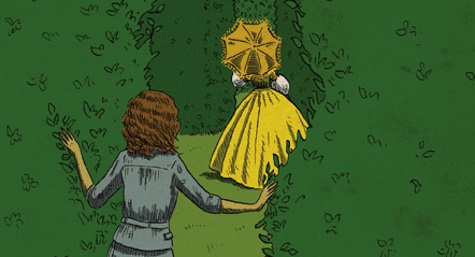When a new book is sold, the first question (after “When is it coming out?” and “Will there be a movie?”) is, “What’s the cover going to be?”
The easy answer is “Beautiful,” because, like babies, all book covers should be beautiful in the eyes of their doting authors. The truth is, some book covers are more beautiful (and true to the book) than others. Some cover art originates with stock the publisher already owns, or marketing departments’ notions of what sells, or the current fashion in best sellers—a thousand things that have nothing to do with art or the book or the magic synergy that marries two disparate art forms into a single object. In most instances, the first a writer (or at least this writer) sees of their covers is a finished mockup of art and type accompanied by a note containing some variation of “Isn’t this beautiful? We’re so pleased with it; hope you are, too!”
So when Gavin Grant of Small Beer Press sent me two pages of cover sketches for The Freedom Maze, I was astonished and very, very pleased. First, that he should ask my opinion. Second (and even more important) that they were, one and all, wonderful. In a few pencil lines, there was my heroine, Sophie, just as I’d imagined her, wild-haired and awkward in her blue seersucker suit, lost in the maze alone, following a girl in ante-bellum yellow, staring at an armless statue, seen from overhead, from a high angle, from straight behind. The sketches were full of movement and character, a little old-fashioned, like Edward Ardizzone or Edward Gorey, only sharper than the former and less self-conscious than the latter; perfect for a book that begins in 1960. I loved each and every one of them.
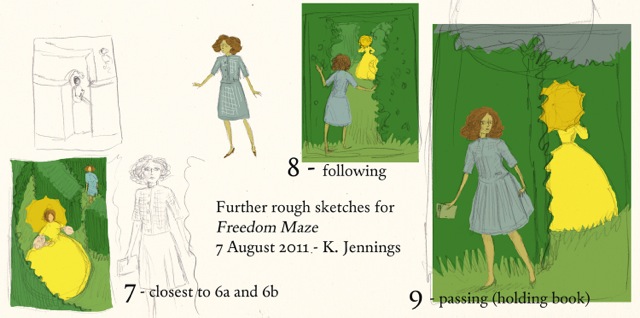
We agreed, finally, on a back-view of Sophie peering after her ante-bellum self, who was disappearing into the maze. The back cover originally featured the armless statue at the end of a leafy corridor, which we decided to replace by an African American girl in a headwrap and a red shawl. The final cover suggested (to me, anyway) past and present, mysteries of identity and situation, and layers of meaning and experience. The image on the front led the reader’s eye deeper, into the physical book itself, where the full story was.
It was a cover that made me perfectly happy.
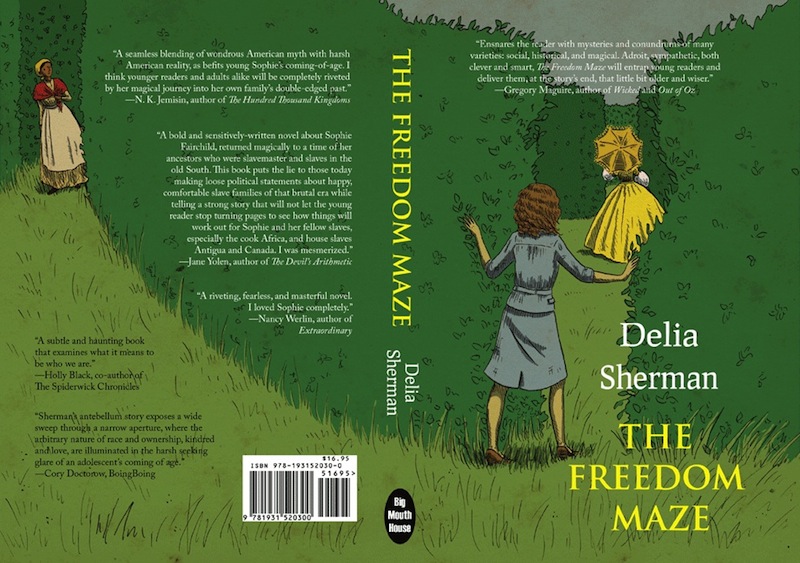
By this time, I knew the artist’s name—Kathleen Jennings. Of course I wanted to meet her and shake her hand and of course, since she lives in Australia, I couldn’t—at least not immediately. A year after the book came out, Kathleen came to New York and we had tea together. I’d planned for a quick hour together; instead, we were still talking when I regretfully had to leave hours later for another appointment. I learned that she is a writer as well as an artist, that she loves fairytales and the Pre-Raphaelites and Tenniel and Arthur Rackham and Georgette Heyer and Joan Aiken and Diana Wynne Jones—and Daleks—that she remembers long swathes of everything that she reads and loves and can recite them at the drop of a hat. She didn’t mention that she also does cut-paper silhouettes.
Oh, those Kathleen Jennings silhouettes.
The line is more decided than her pen and ink work, the shapes more graphic, which makes sense given the difference in medium. But the hand is the same, the sense of suggested movement and character and humor and oh, yes, darkness. Her animals are wonderful, her wolves and foxes especially, though her birds can be very threatening. I don’t remember thinking, particularly, that a silhouette would make a great cover. But when Gavin sent me the cover rough for Young Woman in a Garden, I think I actually gasped. There was a young woman, in perfect profile, with slender trees growing out of her head, the branches hung with images from my stories: the seal from “The Maid On The Shore,” the ring from “The Parwat Ruby,” the absinthe glass from “La Fee Verte,” the fiddle from “The Fiddler of Bayou Teche,” the albatross from “Land’s End,” a cat from “Walpurgis Afternoon.” And a crescent moon and lots of stars because Kathleen’s paper cuts include crescent moons and stars almost as often as my stories include orphans and foundlings, which is very often indeed.
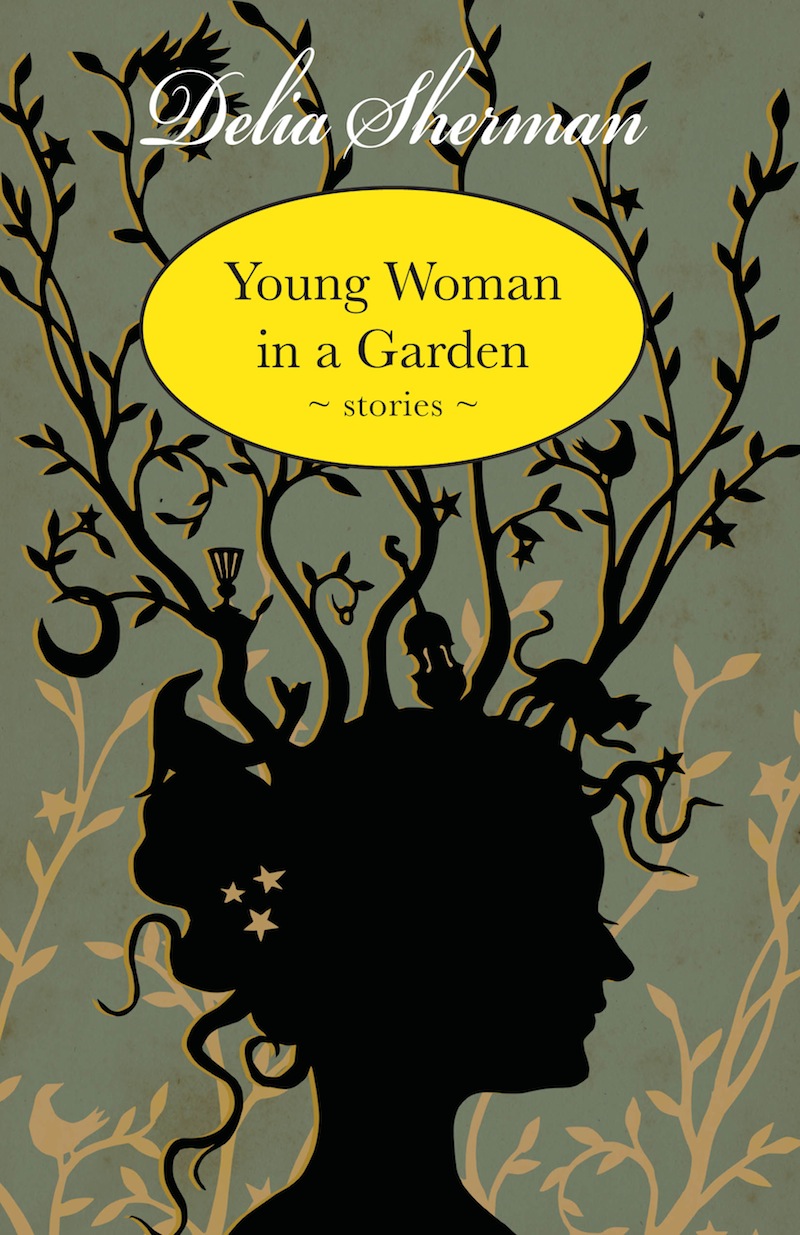
The cover, like the stories, has deep roots in the past. The medium itself, the details of the Young Woman’s knotted-up hair, round chin, and downcast eyelashes, are pure classic silhouette portraiture. But those spindly, graceful trees could not have grown in any cut-paper garden but Kathleen’s and the iconic figures that perch on their boughs are graphic, sharp, surprising, and utterly contemporary in feeling.
The background paper cut, which is similar but not identical to the Young Woman’s head-garden, is a pale shadow of a shadow, a little threatening, a little disturbing, and absolutely perfect.
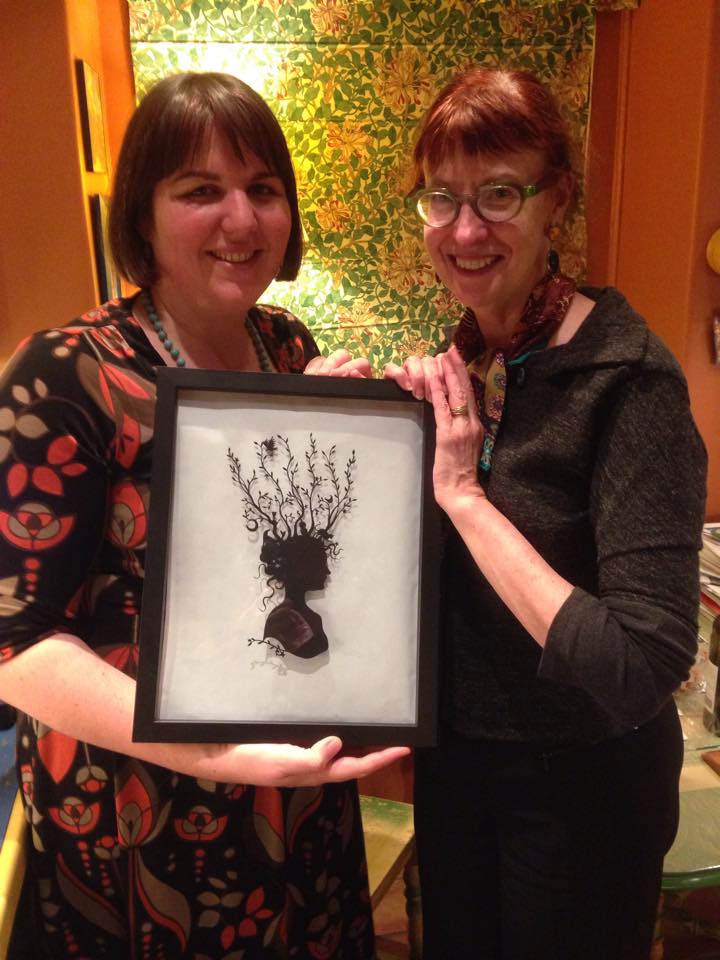
Delia Sherman writes fiction for adults and young readers. Several of her short stories have been nominated for the Nebula and World Fantasy Awards and The Freedom Maze received the Andre Norton Award, the Mythopoeic Award, and the Prometheus Award. Young Woman in a Garden is her first collection of short stories.










